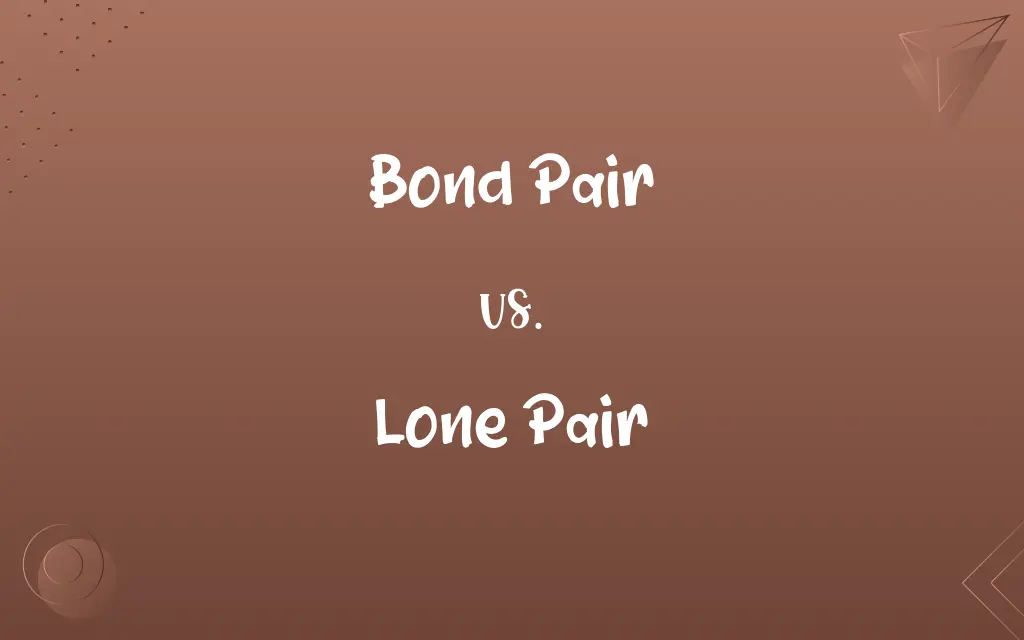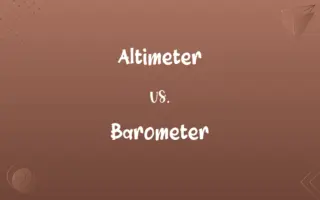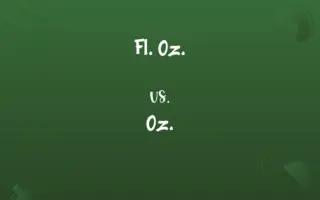Bond Pair vs. Lone Pair: Know the Difference

By Shumaila Saeed || Published on January 8, 2024
A bond pair consists of two electrons forming a chemical bond between atoms, while a lone pair is a pair of valence electrons not involved in bonding.

Key Differences
Bond pairs involve electrons shared between atoms to form a chemical bond, crucial for molecular formation. Lone pairs are valence electrons that remain unshared and uninvolved in bonding.
Shumaila Saeed
Jan 08, 2024
In molecules, bond pairs are found in the space between bonded atoms. Lone pairs, however, are located on a single atom, not shared with others.
Shumaila Saeed
Jan 08, 2024
Bond pairs determine the basic skeletal structure of a molecule. Lone pairs, while not part of the skeletal structure, can influence a molecule's shape due to electron repulsion.
Shumaila Saeed
Jan 08, 2024
Bond pairs contribute to the stability of a molecule by participating in chemical bonds. Lone pairs can make an atom more reactive, as they may be available for bonding in chemical reactions.
Shumaila Saeed
Jan 08, 2024
The presence of bond pairs defines the type of chemical bonds (single, double, triple) in a molecule. Lone pairs affect molecular properties like polarity and can participate in hydrogen bonding.
Shumaila Saeed
Jan 08, 2024
ADVERTISEMENT
Comparison Chart
Electron Involvement
Involved in bonding between atoms
Not involved in bonding, remain unshared
Shumaila Saeed
Jan 08, 2024
Impact on Shape
Determine molecule's skeletal structure
Influence shape through electron repulsion
Shumaila Saeed
Jan 08, 2024
Chemical Reactivity
Contribute to molecular stability
May make atoms reactive for further bonding
Shumaila Saeed
Jan 08, 2024
Role in Properties
Define bond type (single, double, triple)
Affect properties like polarity, hydrogen bonding
Shumaila Saeed
Jan 08, 2024
ADVERTISEMENT
Bond Pair and Lone Pair Definitions
Bond Pair
A pair of electrons shared between two atoms.
A bond pair is present in the covalent bond of H₂O.
Shumaila Saeed
Dec 15, 2023
Lone Pair
Electrons causing repulsion, affecting molecular shape.
Lone pairs on chlorine in Cl₂O create a bent structure.
Shumaila Saeed
Dec 15, 2023
Bond Pair
Electrons directly involved in chemical bonding.
The bond pair in oxygen molecules creates a double bond.
Shumaila Saeed
Dec 15, 2023
Lone Pair
Electrons that can contribute to reactivity.
Lone pairs in amines make them basic.
Shumaila Saeed
Dec 15, 2023
Bond Pair
Electrons forming part of the molecular structure.
Each bond pair in methane contributes to its tetrahedral shape.
Shumaila Saeed
Dec 15, 2023
ADVERTISEMENT
Lone Pair
A pair of unshared valence electrons.
The lone pair on ammonia's nitrogen atom affects its geometry.
Shumaila Saeed
Dec 15, 2023
Bond Pair
A factor contributing to the stability of a molecule.
Bond pairs in nitrogen give it a triple bond and high stability.
Shumaila Saeed
Dec 15, 2023
Lone Pair
Electrons not involved in bonding.
Water molecules have two lone pairs on the oxygen atom.
Shumaila Saeed
Dec 15, 2023
Bond Pair
A pair of electrons occupying a single orbital in a bond.
In a single bond, one bond pair is shared between atoms.
Shumaila Saeed
Dec 15, 2023
Lone Pair
Influences molecular properties like polarity.
Lone pairs give water its polar nature.
Shumaila Saeed
Dec 15, 2023
Repeatedly Asked Queries
Are bond pairs always in pairs?
Yes, bond pairs always consist of two electrons forming a bond.
Shumaila Saeed
Jan 08, 2024
What is a bond pair?
A bond pair is a pair of electrons shared between two atoms in a chemical bond.
Shumaila Saeed
Jan 08, 2024
How do bond pairs affect molecular structure?
Bond pairs determine the basic structure of molecules by forming bonds.
Shumaila Saeed
Jan 08, 2024
Can lone pairs be involved in reactions?
Yes, lone pairs can participate in chemical reactions, often making an atom more reactive.
Shumaila Saeed
Jan 08, 2024
Do Bond Pairs affect the geometry of a molecule?
Yes, the arrangement of bond pairs around a central atom determines the molecular geometry.
Shumaila Saeed
Jan 08, 2024
How many electrons are typically in a Bond Pair?
A bond pair consists of two electrons.
Shumaila Saeed
Jan 08, 2024
What is the significance of Lone Pairs in predicting molecule behavior?
Lone pairs help predict molecular properties, such as bond angles, polarity, and reactivity.
Shumaila Saeed
Jan 08, 2024
Are Lone Pairs involved in hydrogen bonding?
Yes, lone pairs on electronegative atoms like oxygen and nitrogen can participate in hydrogen bonding.
Shumaila Saeed
Jan 08, 2024
What is a lone pair?
A lone pair is a pair of valence electrons not involved in bonding and remains unshared.
Shumaila Saeed
Jan 08, 2024
What is the significance of Bond Pairs in chemical reactions?
Bond pairs play a crucial role in chemical reactions as they are broken and formed during bond-breaking and bond-making processes.
Shumaila Saeed
Jan 08, 2024
Can Bond Pairs be shared between different elements?
Yes, bond pairs can be shared between different elements as long as they can form covalent bonds.
Shumaila Saeed
Jan 08, 2024
Can Bond Pairs be found in both polar and nonpolar molecules?
Yes, bond pairs can exist in both polar and nonpolar molecules depending on the electronegativity of the atoms involved.
Shumaila Saeed
Jan 08, 2024
How many electrons are typically in a Lone Pair?
A lone pair consists of two electrons, just like a bond pair.
Shumaila Saeed
Jan 08, 2024
Can Lone Pairs be found in noble gases?
Noble gases generally do not have lone pairs because they have full valence electron shells.
Shumaila Saeed
Jan 08, 2024
Can Lone Pairs affect the acidity or basicity of a molecule?
Yes, lone pairs on certain atoms can make a molecule more basic by donating electrons, while on others, they can make it more acidic by accepting electrons.
Shumaila Saeed
Jan 08, 2024
Are Bond Pairs involved in ionic bonding?
No, bond pairs are primarily associated with covalent bonding, whereas ionic bonding involves the transfer of electrons.
Shumaila Saeed
Jan 08, 2024
Share this page
Link for your blog / website
HTML
Link to share via messenger
About Author
Written by
Shumaila SaeedShumaila Saeed, an expert content creator with 6 years of experience, specializes in distilling complex topics into easily digestible comparisons, shining a light on the nuances that both inform and educate readers with clarity and accuracy.






























































